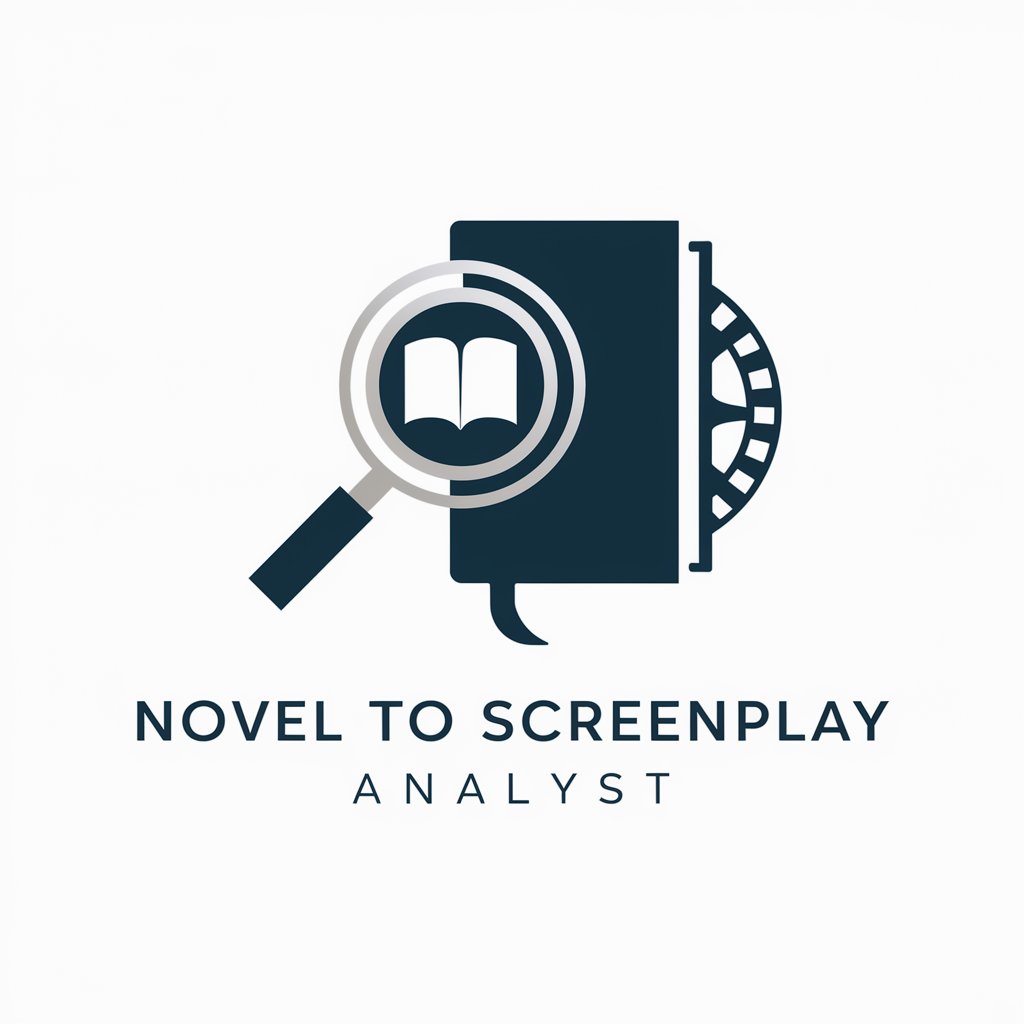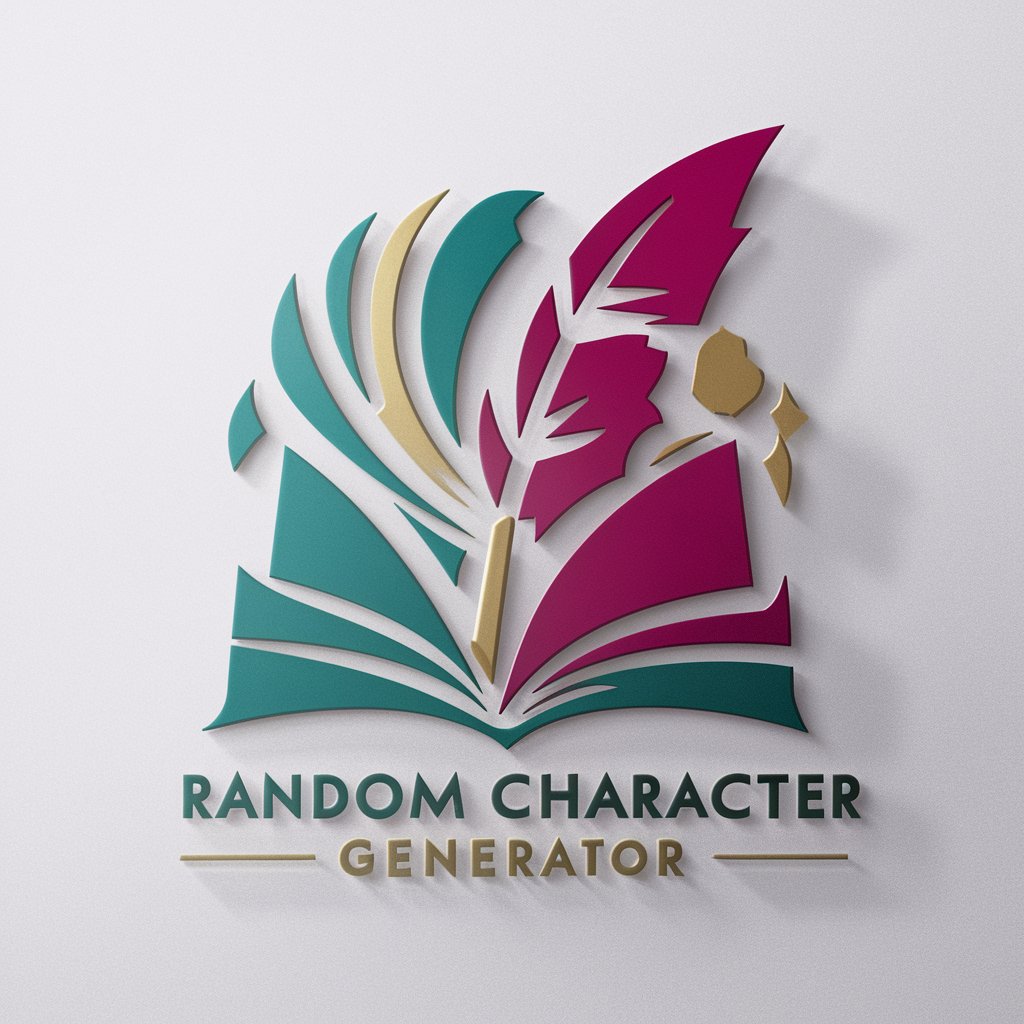Novel to Screenplay Analyst - AI-Powered Adaptation Expert

Welcome to Novel to Screenplay Analyst!
Transforming Novels into Screenplays with AI Insight
Analyze the main plot points of the novel...
Evaluate the character development in the story...
Discuss the thematic elements and how they can be represented on screen...
Suggest potential settings for the film adaptation based on the novel...
Get Embed Code
Understanding Novel to Screenplay Analyst
The Novel to Screenplay Analyst is designed to provide a comprehensive analysis of novels for potential film adaptation. It dissects narratives into key components such as plot, character development, setting, and thematic elements. This service then assesses how these components can be translated to the screen, suggesting the format and duration of the adaptation. For example, it might analyze a classic novel like 'Pride and Prejudice', breaking down its intricate plot, the evolution of characters like Elizabeth Bennet, the early 19th century English setting, and themes of class and marriage. It would then offer insights on adapting these elements into a screenplay, considering the novel's depth and the cinematic requirements. Powered by ChatGPT-4o。

Key Functions of Novel to Screenplay Analyst
Narrative Dissection
Example
Analyzing 'To Kill a Mockingbird', focusing on its linear narrative structure, character arcs like Scout's growth, and the racially charged setting of the American South.
Scenario
Used to identify core elements of a story that are crucial for screenplay adaptation.
Adaptation Assessment
Example
Suggesting '1984' be adapted as a miniseries rather than a film, due to its complex political themes and the need for detailed world-building.
Scenario
Assists in deciding the format (film, series, miniseries) and style of the adaptation.
Thematic Analysis
Example
Exploring the themes of love and societal expectation in 'Jane Eyre', and how these can be portrayed visually and narratively in a film.
Scenario
To ensure the film adaptation remains true to the novel's core messages and themes.
Target User Groups for Novel to Screenplay Analyst
Film Producers and Screenwriters
They benefit from a structured analysis of novels to create faithful and engaging screenplays, understanding the key elements to retain from the source material.
Literary Analysts and Academics
Useful for those studying the process of adaptation from literature to film, offering insights into the transformation of narrative structures and themes.
Film Students
Helps students learn about adaptation processes, providing them with practical examples and detailed analyses of how novels can be effectively translated to the screen.

Guidelines for Using Novel to Screenplay Analyst
1
Visit yeschat.ai for a free trial without login, also no need for ChatGPT Plus.
2
Choose the 'Novel to Screenplay Analyst' from the list of available GPTs and input the title or a brief description of the novel you wish to adapt.
3
Provide specific sections or themes from the novel you're focusing on, or ask general questions about the adaptation process.
4
Review the detailed analysis provided, covering plot structure, character arcs, setting, and thematic elements, and how they could translate to a screenplay.
5
Use the suggestions for format, duration, and visual design to begin drafting your screenplay or to further refine your adaptation strategy.
Try other advanced and practical GPTs
Fitness Bot
Empower Your Fitness Journey with AI

Albert Einstein
Channeling Einstein's Genius through AI

Vegan Club
Empowering your vegan journey with AI

Random Character Generator
Bringing Characters to Life with AI

ARTIA
Empowering Art Insights with AI

Sugar Beta
Empowering Your Real Estate Journey with AI

!AI Doctor!
Empowering Health Decisions with AI Insight

Master Perfumer Gerard
Crafting Scents, Powered by AI

販促イベントプランナー
Craft Your Promotion with AI-Powered Cultural Insight

FINBY
Empowering Your Financial Decisions with AI

Create Viral Hooks
Empower Your Posts with AI

Travel Guide Best Day Ever
AI-Powered Personal Travel Assistant

Frequently Asked Questions about Novel to Screenplay Analyst
How accurate is the Novel to Screenplay Analyst in understanding complex narratives?
The tool is designed to grasp complex narrative structures and provide detailed analysis, although the accuracy can depend on the clarity and detail of the information provided.
Can this tool help with casting suggestions for the screenplay adaptation?
While the primary focus is on narrative and thematic elements, it can offer casting suggestions based on character traits and dynamics outlined in the novel.
Is there a limit to the length or genre of novels that can be analyzed?
There are no strict limits on length or genre, but more detailed and structured novels tend to yield more comprehensive analysis.
How does the tool handle novels with multiple themes and subplots?
It can dissect multiple themes and subplots, offering insights into how they might be integrated or highlighted in a screenplay.
Can it provide guidance on how to maintain the novel's essence while adapting to a screenplay?
Yes, it offers suggestions on preserving the novel's core essence, considering both narrative fidelity and the different demands of film as a medium.
